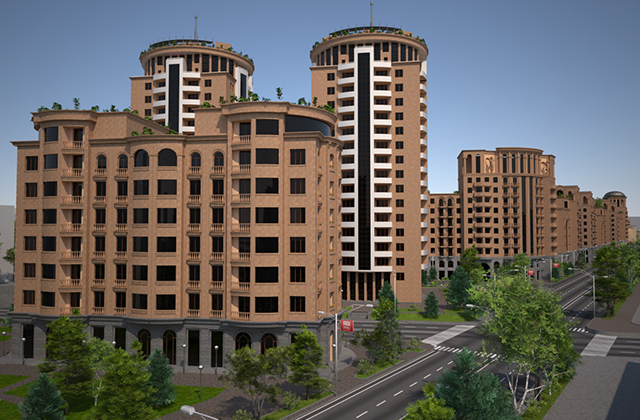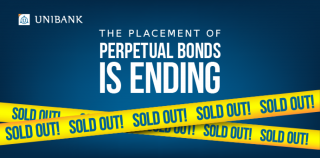
Standstill for Stability

It has been formerly reported that prices for Armenia’s real estate throughout recent years have stiffened—nothing influences on these prices. There is an impression that after 2013 real estate market is cut off from Armenia’s reality and exists on quite a different unreal platform.
Until April 2013 official data of prices for real estate have logic: prices are changing, they rise and fall. Since April 2013 taking these indices as a basis, prices for apartments haven’t changed. Even by 1 dram.
The dynamics of average price for 1 m2 of apartment in the center of Yerevan is introduced in the Chart. In April 2013 it comprised AMD 428 thousand, in March 2016 it remained the same. In case of other administrative districts the snapshot is the same. The fact of price “freezing” in real estate market found its reflection in the Financial Stability Report 2015 issued by the Central Bank of Armenia (CBA) a few days ago.

Average market prices for apartments in Yerevan’s Kentron admninistrative district (per 1 m2), 2010-2016
“In 2015, no stirring of activity was noticed in the real estate market amidst the expansion of foreign and domestic uncertainties. The prices of apartments in multi-apartment homes both in Yerevan and in other towns of Armenia remained merely unchanged,” mentions CBA adding that in 2015, the average market prices of apartments in residential apartment buildings in Yerevan increased by 0.2%, on 1m2 surface basis, while prices in other towns remained unchanged, in comparison with 2014. Slightly said, this is strange.
Real estate market is one of the best indicators for economic condition and changes, and real estate prices usually are very sensitive towards economic changes.

It’s so everywhere but Armenia, of course. As economic growth slowdown, sharp reduction of private money transfers, decrease of purchasing capacity, weakening of crediting temps, migration should have had serious impact on prices for real estate, however this didn’t occur.
Moreover, all these negative phenomena are reflected in CBA report. However, CBA doesn’t clarify how this can occur “Under external and internal deepening of economic uncertainties.”
And this is quite natural, that the issue doesn’t bother CBA. The latter is interested in prices for real estate only from one standpoint—financial stability. And from this perspective standstill contributes to financial stability, as “Risks to real estate price fluctuations were insignificant for financial stability.”
From the perspective of financial stability regarding commercial banks the following risks are singled out: loan, liquidity, market. In their turn exchange risks, interest rate risks and price risks are included in the commercial risks. And price risk, first and foremost, refers to real estate prices. And if there are more or less concerning points regarding other issues, then regarding real estate risk it is almost neutralized.
It’s worth introducing it more simply. For instance, Bob, Tom and John bought apartments by credit. Price for each apartment is USD 50 thousand. The bank, naturally, mortgaged those apartments and allocated loan by maximum USD 30 thousand for each apartment. It turns out, that on the whole the bank allocated USD 90 thousand loan, and has AMD 150 thousand mortgage for that.
Bob, Tom and John punctually make the payments, i.e. the 90 thousand is becoming less and less approaching to zero. And if at the same time, prices for real estate grow as well, quite favorable conditions will be established for the bank. This means, if one day one, two or three of the borrowers refuse to make payments, the bank will auction the apartments and quickly get back both the principal amount, interests and dues/penalties. And realizing this the borrowers make the payments not to be deprived of the apartment.
Now imagine the opposite: prices for real estate sharply drop, and price for USD 50 thousand apartments fall to USD 25 thousand. In this case by selling real estate of the dishonest borrower, the bank can’t even return the principal amount.
Moreover, if the process has wider scales, number of overdue loans will sharply grow, then by selling much real estate the banking system will more contribute to fall in price. And this may lead to the collapse of the financial system. It’s clear now, why it’s not beneficial to the banking system, that prices for real estate didn’t fall and at least, remained unchanged. However, one shouldn’t be afraid, our banking system is super insured in this regard.
According to CBA domestic commercial banks further provided mortgages with loan-to-value ratio mostly between 60-80%, while taking quite a strict approach in evaluating borrowers’ creditworthiness.
Note also, that CBA calculates stress scenarios in case of 30% depreciation. According to different types of risks, loss of banks may comprise from AMD 13 billion to AMD 43.2 billion, or 2.7%-9.1% of banking sector capital.
By Babken Tunyan























